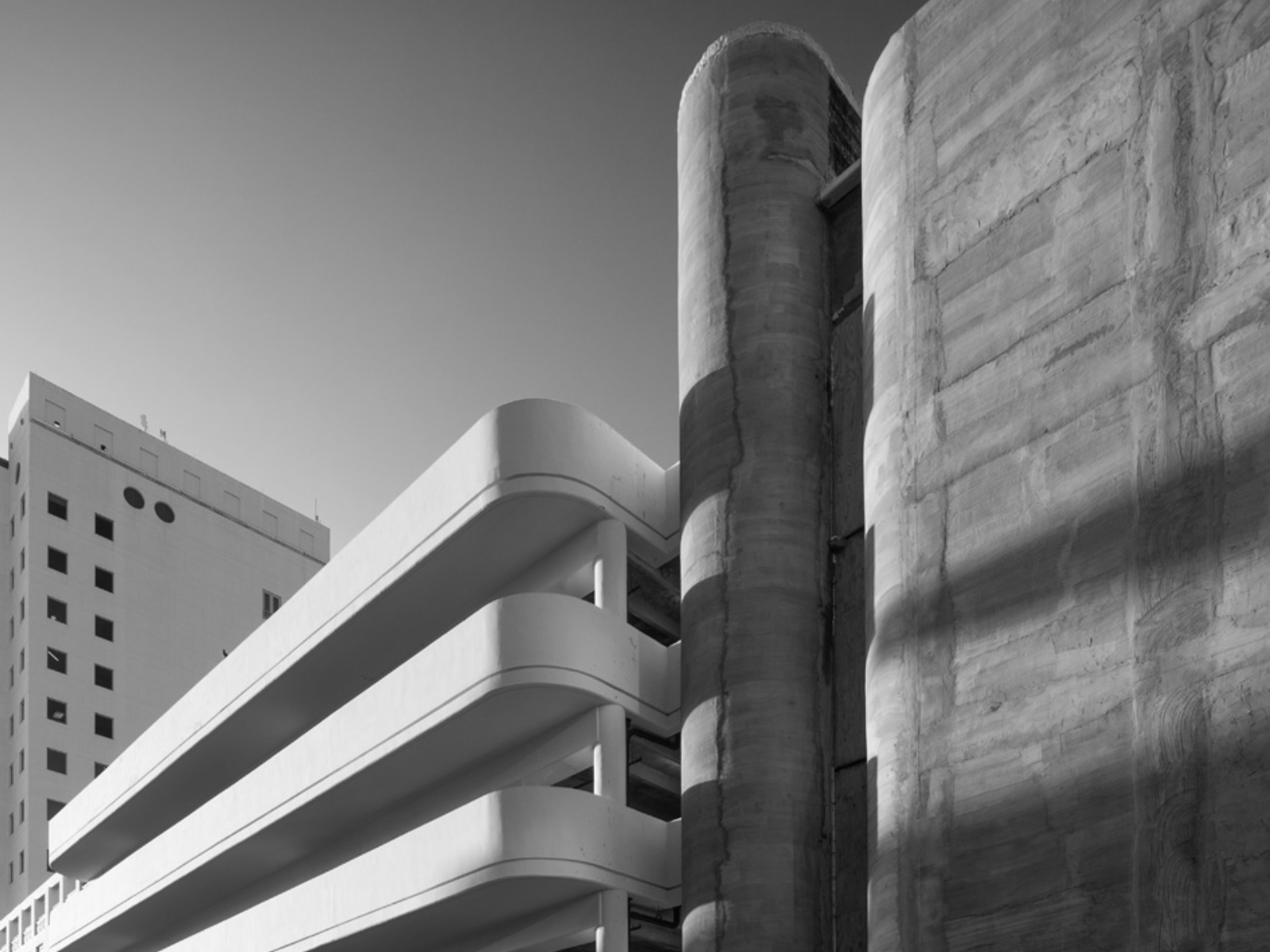The three buildings featured in this article have been chosen as proud examples of Brutalist architectural treasures in Coral Gables, Florida. The photographer, Robin Hill, whose many talents include highlighting architectural modernism, was chosen to capture the dramatic shadows and angularities of the buildings. Hill was able to display the theatrical beauty in this trio of stars. You can read more about Hill’s work below.
Big, Bold & Beautiful
In Coral Gables, an ongoing conversation concerns the beauty of our architectural heritage. Does our design sensibility begin and end in the 1920s, when the city was founded as part of the City Beautiful Movement? Or do we view our built environment as a dynamic work in progress – a “moveable feast” of diverse building styles that reflect changing standards of beauty, utility, and sustainability.
In the 1960s and 1970s, Coral Gables, like many other cities in Florida, embraced the Modern Movement. A conscious effort to depart from traditional forms gave way to Brutalism, a barren design form antithetical to the traditional ornament of Coral Gables’ architecture.
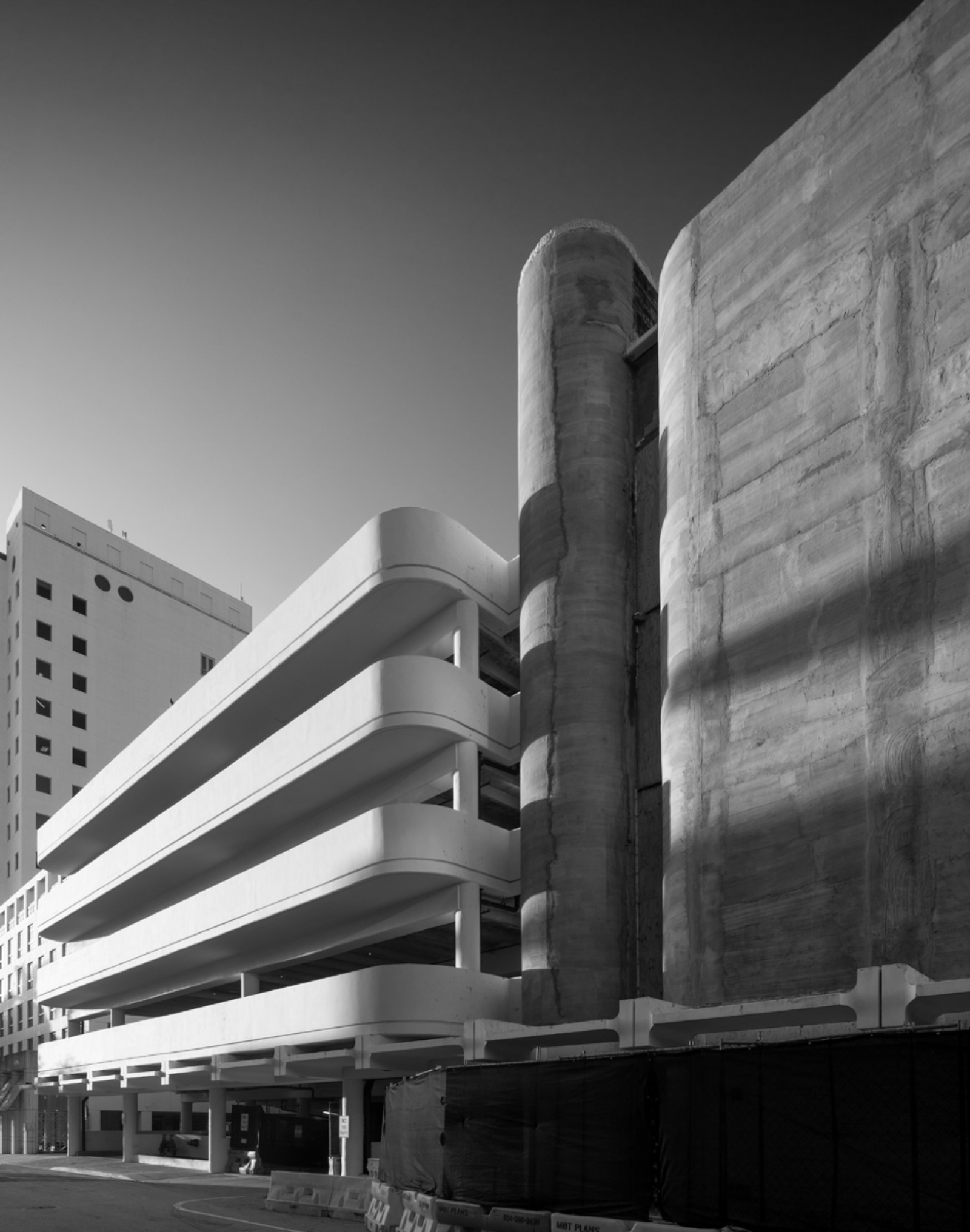
2801 Salzedo Street, the former Public Safety Building, designed in 1973 by Walter Klements. Photo Credit: Robin Hill.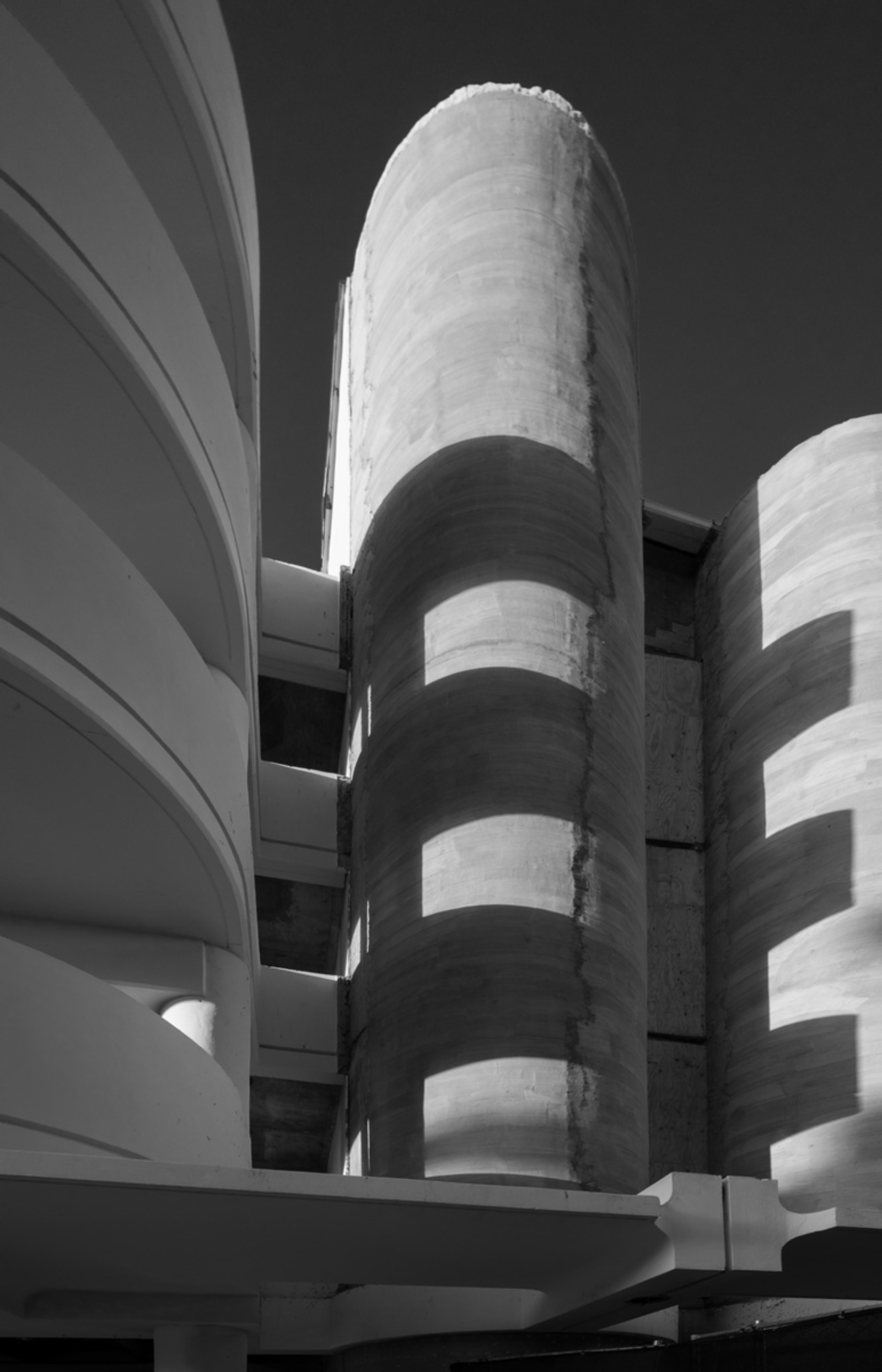
2801 Salzedo Street, the former Public Safety Building, designed in 1973 by Walter Klements.
“Brutalism” emerged in Post-WWII Europe and continued to influence modern art and architecture for decades thereafter, from Marseilles to Miami. It generally featured raw concrete surfaces and bold sculptural forms of such brash originality that they were viewed as alien among the genteel “Villages” of Coral Gables. Brutalism shocked the design world in the 1950s, but it did not arrive in Coral Gables until decades later, where the Mediterranean Revival style had reigned supreme since the Jazz Age.
The advent of Brutalism in Coral Gables can be traced back to the 1964 bank building, one of the earliest examples commissioned by the Flagship National Bank. Government buildings, libraries, banks and even parking garages were designed and constructed in this new bold style. Buildings with exposed concrete or brick, razor sharp edges, angles and geometric shapes adopted by the local municipal government conveyed strength, stability and endurance.
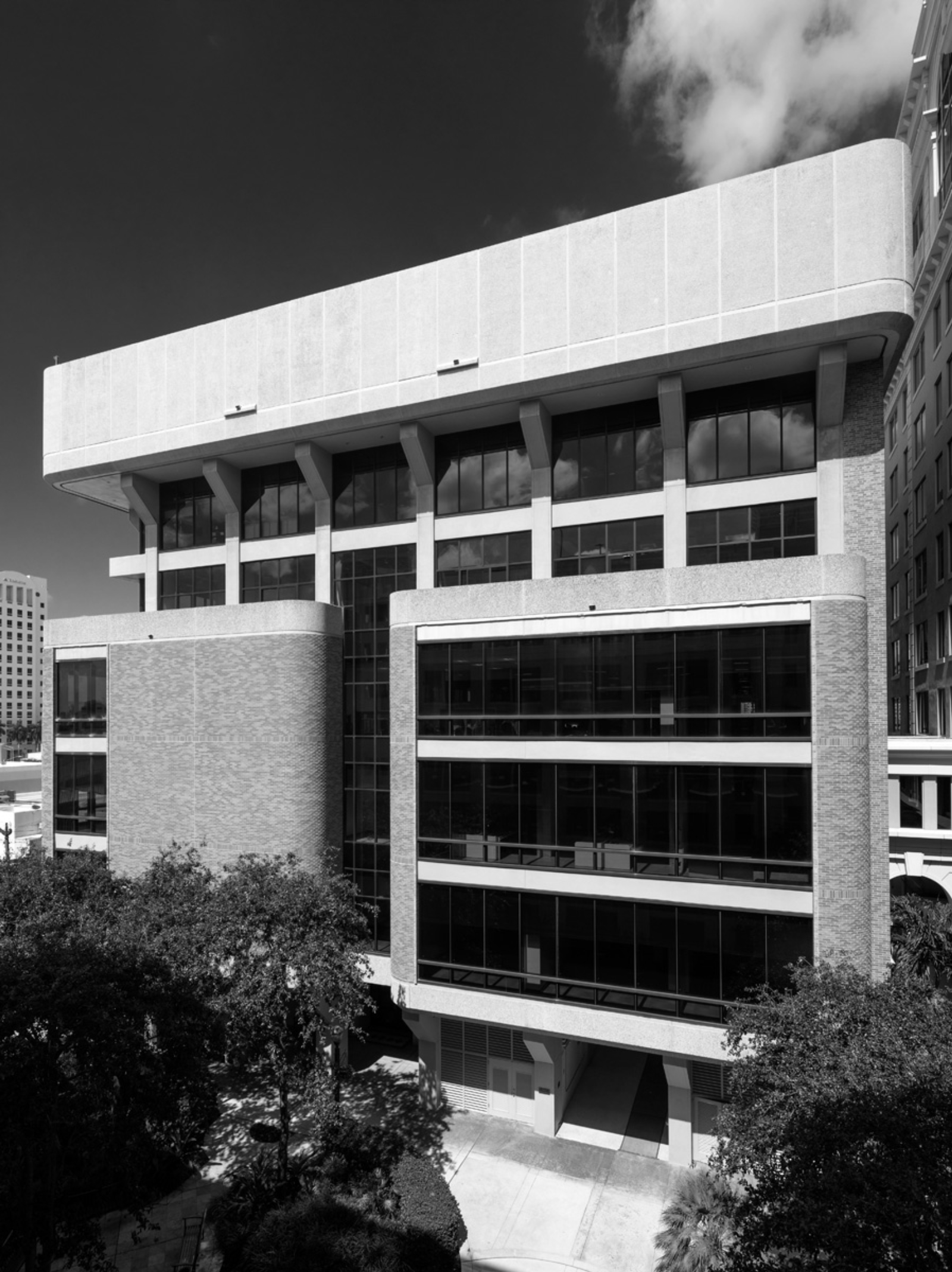
2555 Ponce de Leon Boulevard, the former Flagship National Bank of Miami, designed in 1964. Photo Credit: Robin Hill.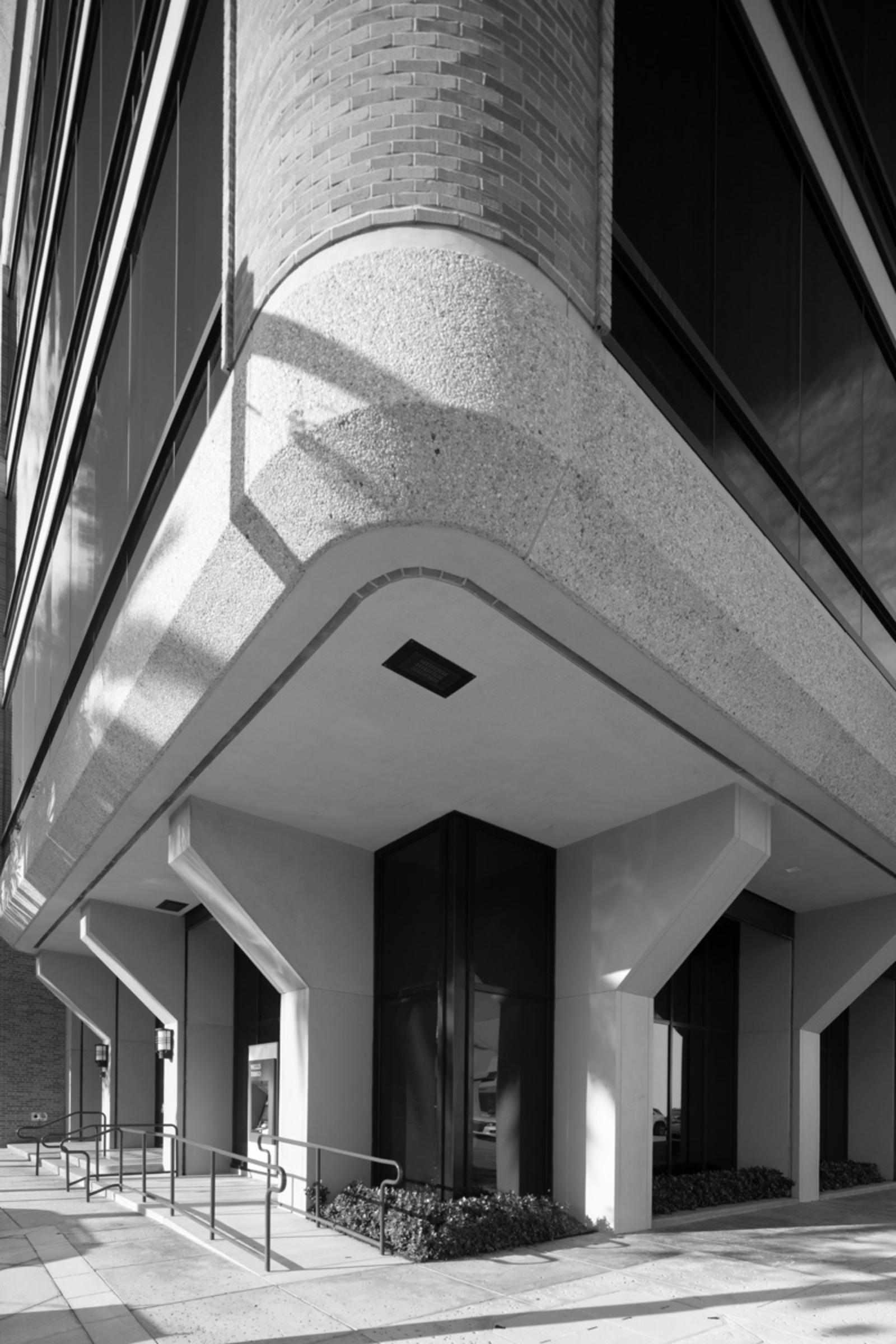
2555 Ponce de Leon Boulevard, the former Flagship National Bank of Miami, designed in 1964. Photo Credit: Robin Hill.
After WWII, these forms projected a new wave of optimism in the US. As the post-war economy strengthened, many government and commercial buildings followed suit, conveying this image through their assertive and audacious designs. As architecture critic Alexandra Lange stated in her review of the New York Museum of Modern Art exhibition, “Toward a Concrete Utopia”, “My theory about why we love concrete architecture is now simple – it has body”.
Today, extant Brutalist structures around the world are being reappraised and repurposed as new conversations about their historical significance have advanced our thinking about the environmental consequences of demolition versus the benefits of adaptive reuse. As older modern buildings seemingly outlive their usefulness or desirability, is the wiser course of action to eliminate or to repurpose them? While beauty is subjective, demolition and subsequent new construction release catastrophic amounts of carbon into the atmosphere. “The greenest building”, proclaimed architect Carl Elefante (past President of the American Institute of Architects), “is the one already standing”.
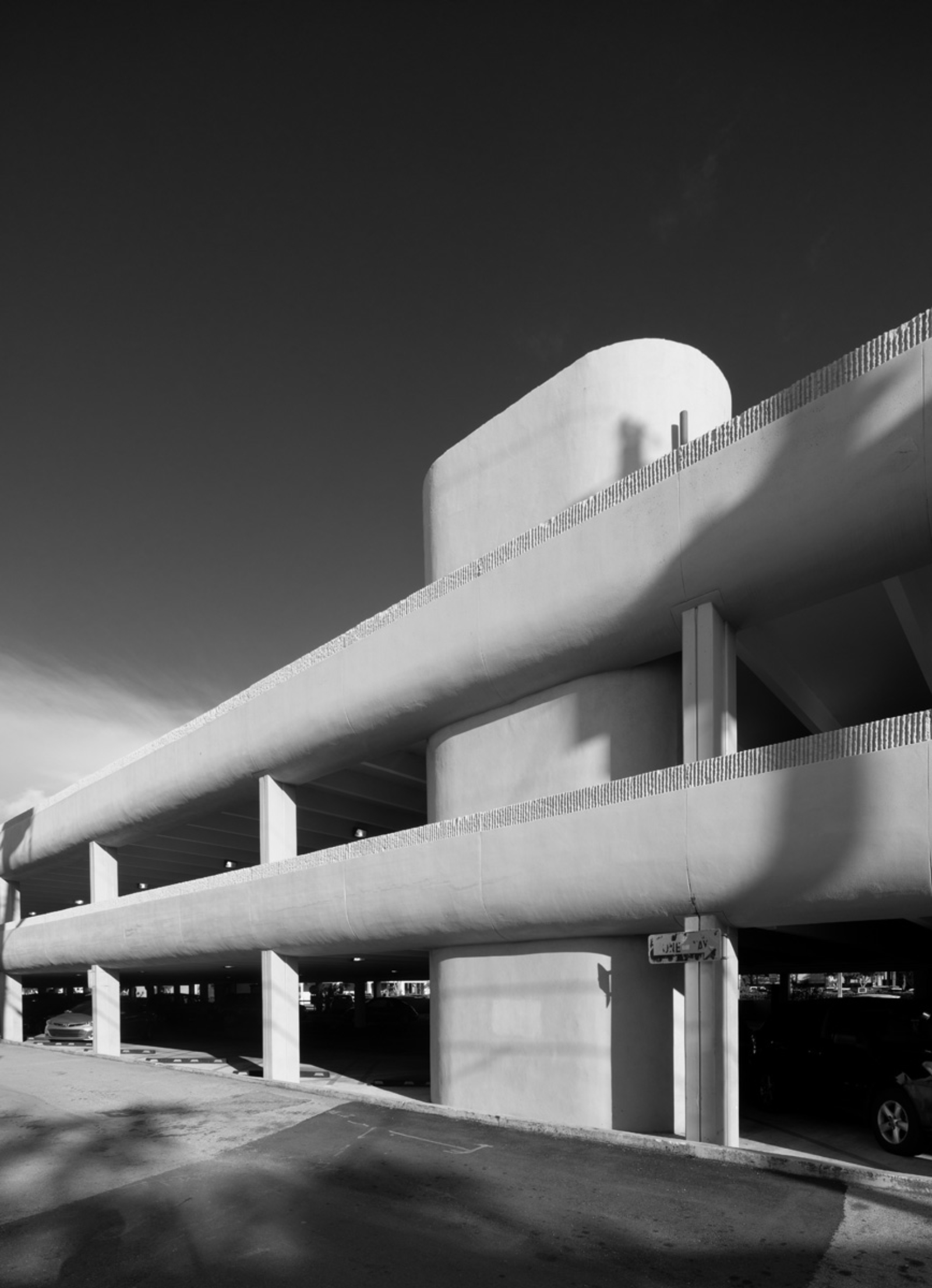
385 Andalusia Avenue, built in 1975-1976 by Ferguson, Glasgow, Schuster. Photo Credit: Robin Hill.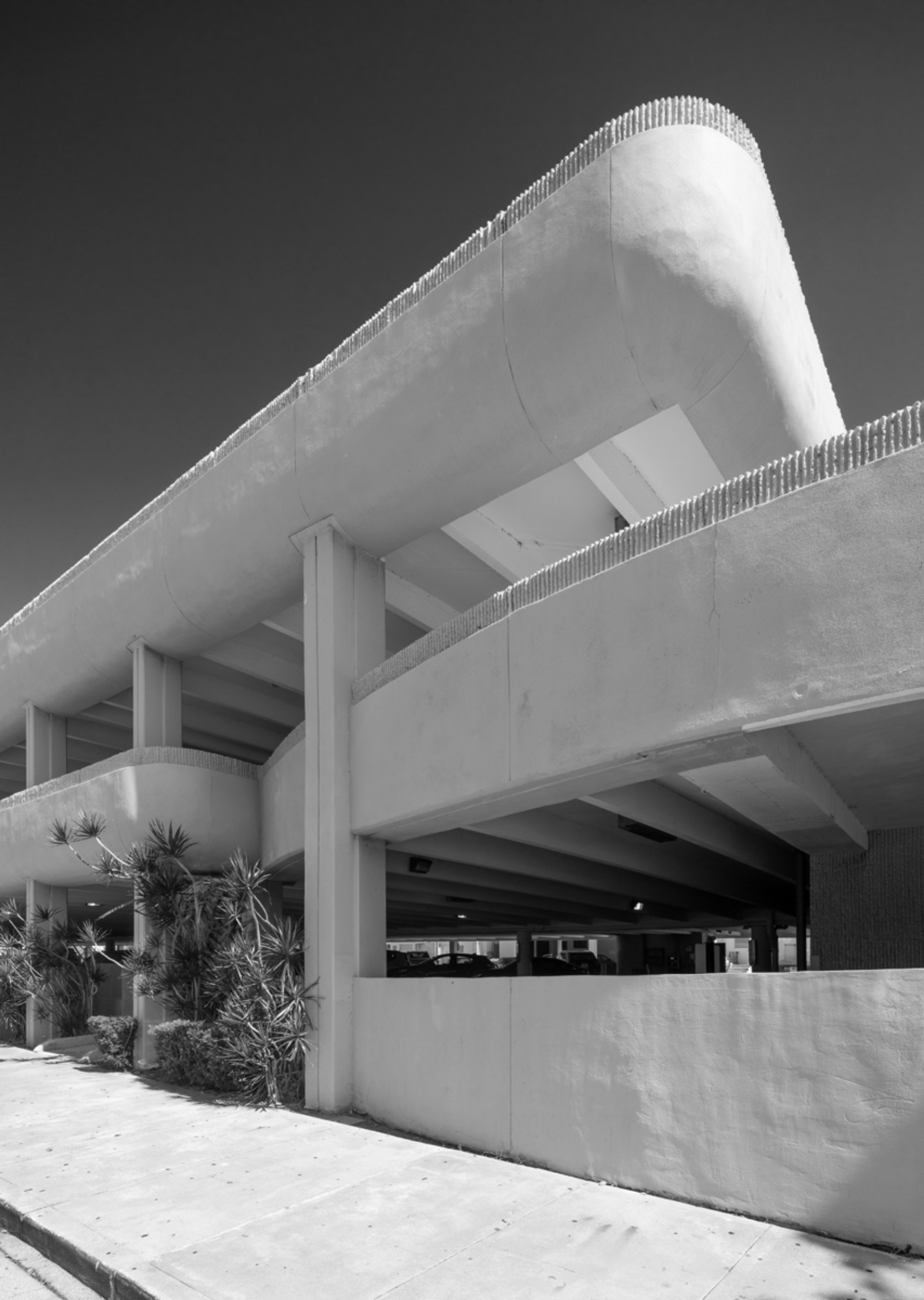
385 Andalusia Avenue, built in 1975-1976 by Ferguson, Glasgow, Schuster. Photo Credit: Robin Hill.
Of the numerous Brutalist buildings standing in Coral Gables, the three shown here are not only standing but standing proud: the former Flagship National Bank of Miami building designed in 1964, a public parking garage designed in 1975 by Ferguson, Glasgow and Schuster, and the former public safety building designed in 1973 by Walter Klements. Today, this 1973 signature structure is being re-purposed as the Coral Gables Mercedes-Benz showroom and corporate office. Together, these treasures hiding in plain sight are perhaps most relevant for their very novelty. Each distinctively exhibits the dramatic angularity, the unexpected curvature, and the chiaroscuro for which Brutalist architecture is rightly celebrated.
Robin Hill
Miami and New York based photographer, Robin Hill straddles the boundaries between architecture, design and fine art by using his medium of choice; photography. Born and raised in Nottingham, England, Hill's photographs have been exhibited at the Guggenheim Museum and graced the pages of the world's leading design publications such as Vanity Fair, Elle Decor and Architectural Digest. Hill has worked with many of the world's leading architects including Herzog & de Meuron, the late Zaha Hadid and SHoP architects as well as local architects such as Arquitectonica, Shulman + Associates and KZ Architecture.
Hill first became known in the world of architecture through a project known as MiMo (MIami MOdern) which is a movement to preserve post war architecture in Miami and resulted in the seminal exhibition: 'Beyond the box' held at the Municipal Art Society in New York and the publication of the book: MiMo: Miami Modern revealed (Chronicle books 2004), the first of more than 20 books Hill has collaborated on. Historic Preservation has been a theme of his work and includes a ten year project to highlight the 'Child of the Sun' college campus by Frank Lloyd Wright at Florida Southern College.
Coral Gables will be the site for some tours and events during the 2024 National Symposium in Miami.
